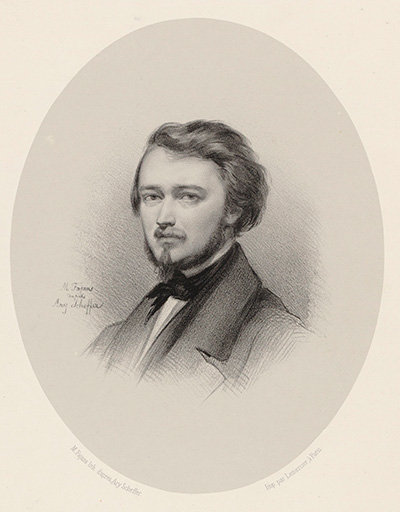Adrien-François Servais

Born: June 6, 1807, Halle, Belgium
Died: November 26, 1866, Halle, Belgium
Hubert Léonard

Born: April 7, 1819, Bellaire, Belgium
Died: May 6, 1890, Paris, France
Grand Duo de Concert No. 2 sur des thèmes de Beethoven
- Composed: Unknown
- Premiere: Unknown
- Duration: approx. 14 minutes
Adrien-François Servais was perhaps the most important virtuoso cellist of the 19th century. He was nicknamed “the Paganini of the cello” and founded the Franco-Belgian school of cello playing. Servais played on a cello made in 1701 by Antonio Stradivarius, and he is the first cellist to ever use an endpin. The instrument, bearing the name of its most famous owner, is the “crown jewel” of the instrumental collection in the Smithsonian’s National Museum of American History. It was donated to the Smithsonian by Charlotte Bergen, a patroness of American music and performer, who acquired the instrument in the 1930s. (Read the clipping from The New York Times about Bergen's donation.)
At the height of his career, Servais recruited three violin virtuosos (Joseph Ghys, Henri Vieuxtemps and Hubert Léonard) to co-compose several “concert paraphrases” (among the most important and influential genres of instrumental music in the mid and late 19th century). The result was six Grand duos de concert for violin and cello, with the Grand Duo sur des thèmes de Beethoven being, arguably, the most illustrious. Among the themes are some of Beethoven’s most memorable, including those from the “Kreutzer” Violin Sonata, symphonies nos. 6 and 7, as well as many other “hidden” motifs. While the piece favors the cello ever so slightly, this co-composition is a true tour de force for both instrumentalists and leaves nothing to be desired at the end.
—Lachezar Kostov